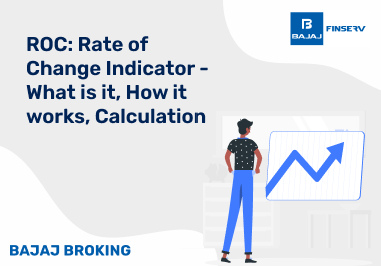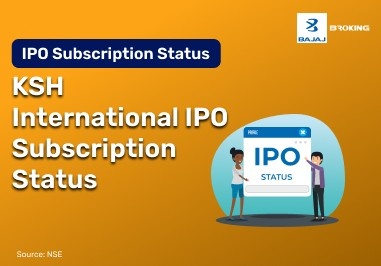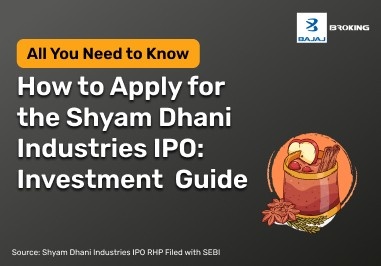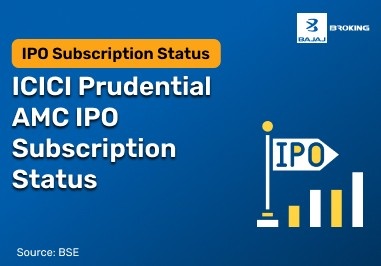If you're aiming for long-term wealth creation through equity investing, spotting a multibagger stock can be a turning point in your financial journey. Multibaggers are stocks that multiply their initial investment value over time, often several times over. But identifying them requires more than luck—it demands patience, research, and a solid understanding of business fundamentals. For Indian investors, especially those looking to build a portfolio beyond blue chips and index funds, recognising the signs early can be valuable. These stocks typically emerge from lesser-known companies with strong financials, scalable business models, and consistent performance. This guide offers a detailed overview of what multibaggers are, how to spot them using key characteristics and financial metrics, and the common pitfalls you should avoid. If you're ready to explore stocks with high growth potential and align them with your investment goals, this article walks you through each step with practical, relatable insights.
What are multibagger stocks?
Multibagger stocks are shares of companies that deliver returns significantly higher than their purchase cost, often multiple times over. The term was popularised by Peter Lynch, a renowned investor, and has become common in the Indian stock market to describe high-growth equity investments.
Typically, a stock becomes a multibagger when the underlying company demonstrates strong growth in earnings, expansion potential, and efficient capital use over a long period. These are not overnight performers. Instead, they often start as small or mid-cap companies with underappreciated potential, eventually delivering exponential returns as they scale.
For example, many of India’s well-known companies—such as Infosys and Titan—were once undervalued stocks that later turned into multibaggers due to consistent business growth. If you're looking to identify such stocks, it's essential to focus not only on price movements but also on qualitative and quantitative fundamentals. Identifying multibaggers is more about disciplined research than timing the market.
Key characteristics of multibagger stocks
Identifying a multibagger requires you to focus on specific traits that distinguish these companies from regular performers. These characteristics often relate to business fundamentals, market opportunity, and leadership quality. Recognising these patterns can help you shortlist potential long-term winners.
Before reading further, reflect on the kind of businesses you understand well. Investing in familiar sectors can improve your ability to evaluate these traits.
Strong revenue and profit growth
Multibaggers often show consistent top-line and bottom-line growth. A steady increase in sales and profits indicates a scalable business model with growing demand.
Efficient capital allocation
These companies use their resources wisely. High return on equity (ROE) and return on capital employed (ROCE) are common indicators of good capital management.
Low or manageable debt levels
Multibaggers usually avoid excessive leverage. A healthy debt-to-equity ratio shows financial discipline and reduces risks related to repayment pressure or interest burden.
Competitive advantage or moat
Whether it’s technology, brand, or cost leadership, a sustainable edge over competitors supports long-term profitability and market dominance.
Visionary management
Leadership plays a crucial role. Promoters or executives with a long-term outlook, integrity, and strong execution skills often steer companies towards exponential growth.
Industry tailwinds
Firms operating in sectors with growing demand, favourable regulation, or technological disruption have a higher chance of achieving rapid scale and market share.
How to identify multibagger stocks: Step-by-step guide
Identifying multibaggers involves a methodical approach rather than relying on speculation. The following steps help you streamline your research and focus on companies that match multibagger potential.
Before diving in, take stock of your financial goals and risk appetite. Multibaggers may take years to deliver, so patience and conviction are crucial.
Understand the business model
Start by evaluating how the company earns money, its core offerings, and whether its model is scalable. A simple, sustainable model is often easier to analyse and forecast.
Analyse past financial performance
Look at multi-year trends in revenue, profits, and margins. Consistent performance signals that the business has passed different economic cycles with resilience.
Check valuation relative to growth
Evaluate price-to-earnings and price-to-book ratios in context with earnings growth. Avoid companies trading at inflated valuations without supporting fundamentals.
Study promoter background and management quality
Assess the management’s vision, past track record, and shareholding pattern. High promoter holding generally reflects confidence in the business.
Assess growth potential in its industry
If the industry is expanding and the company is well-positioned, it’s more likely to benefit from macro trends, increasing the chance of compounding returns.
Financial metrics to evaluate potential multibaggers
Evaluating financial data is a core part of identifying multibaggers. The table below outlines key ratios and what they indicate about a company’s growth potential.
Metric
| Description
| Why It Matters
|
Revenue growth (CAGR)
| Compound annual growth rate of revenue over 3–5 years
| Indicates consistent top-line expansion, a basic growth signal
|
Net profit margin
| Net income as a percentage of total revenue
| Shows how efficiently the company converts sales into profits
|
ROE (Return on Equity)
| Net income divided by shareholder’s equity
| Measures how well the company rewards its shareholders
|
ROCE (Return on Capital Employed)
| Operating profit divided by capital employed
| Gauges capital efficiency regardless of funding structure
|
Debt-to-equity ratio
| Total debt divided by total equity
| Evaluates financial risk and company’s reliance on borrowed funds
|
EPS growth
| Year-on-year growth in earnings per share
| Reflects increasing profitability on a per-share basis
|
P/E ratio
| Price of stock divided by earnings per share
| Helps assess if a stock is undervalued or overpriced
|
Free cash flow
| Operating cash flow minus capital expenditure
| Indicates the company’s ability to reinvest and manage liquidity
|
Common mistakes to avoid when identifying multibaggers
While aiming to find the next big stock, investors sometimes fall into avoidable traps. Being aware of these common errors can help you make more objective and informed choices.
Take a moment to think about your current strategy. Have you focused more on stock price trends than on actual company performance?
Chasing past returns
A stock’s past performance doesn’t guarantee future gains. Focusing only on historical returns may mislead you into buying overvalued stocks.
Ignoring valuations
Even high-growth companies can be poor investments if purchased at inflated prices. Ignoring valuation metrics often leads to disappointing returns.
Neglecting business fundamentals
Following market trends or recommendations without studying the business model or industry can result in poor stock selection.
Overlooking promoter integrity
Ignoring red flags like pledging of shares, frequent management exits, or unclear communication from promoters can affect investment safety.
Lack of patience
Multibaggers don’t emerge overnight. Frequent buying and selling based on short-term price movements can prevent you from realising their true potential.
Conclusion
Identifying multibagger stocks requires a blend of research, discipline, and patience. These stocks are not just about sharp price increases—they reflect long-term value creation driven by strong fundamentals, capable management, and scalable business models. As an Indian investor, taking the time to evaluate companies thoroughly and staying invested through market cycles can help you unlock this potential. With the right approach, you can avoid common pitfalls and build a portfolio that supports your long-term financial goals.














